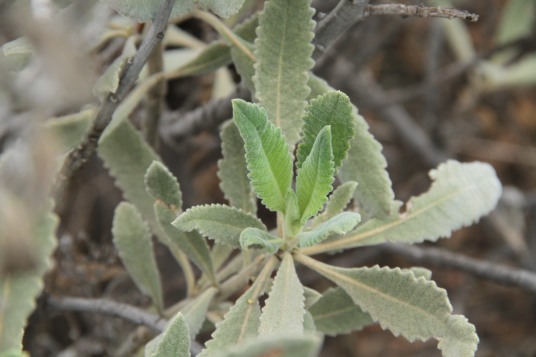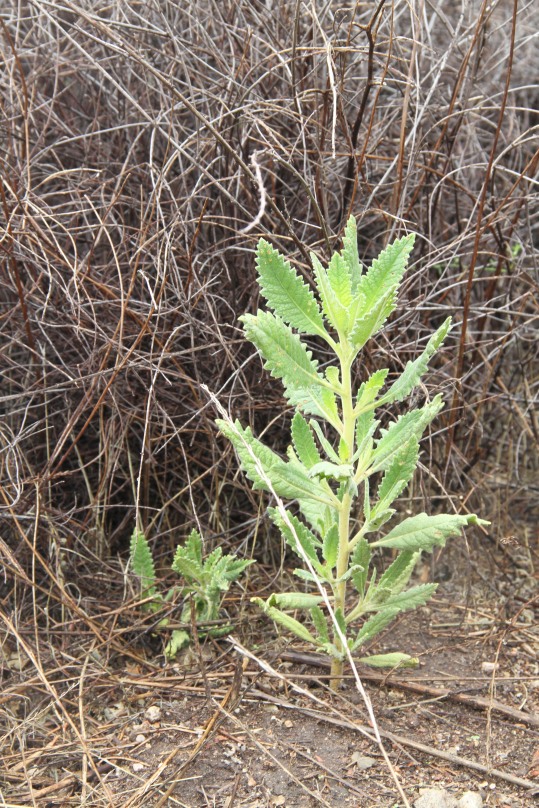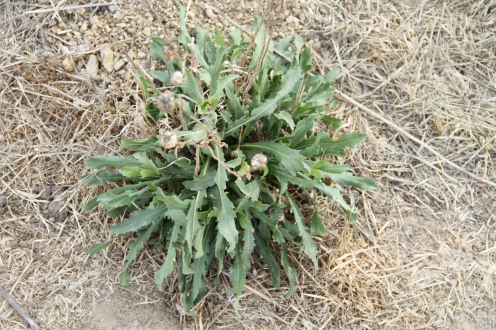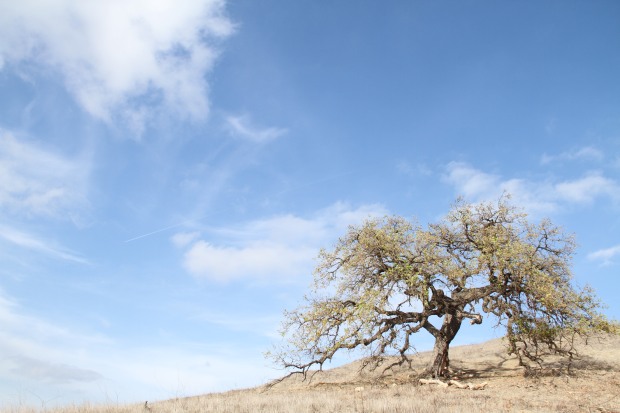Sagebrush (Artemisia californica), known to the Chumash as khapshikh (pronounced kopsheek), is an amazing medicinal plant with many uses. I love Sagebrush. Despite it’s name it is actually not a sage at all. California Sagebrush is in the Artemesia family and is actually more closely related to Mugwort than Sage. It grows in abundance all across the dry hills of southern California. It smells wonderful and was used traditionally to bring back pleasant memories. I run my hand across the leaves and breathe in the wonderful smell every time I am out on the trails. I find it relaxes and invigorates me, making the hikes even more enjoyable. Sagebrush is a survivor, and after a period of drought it is one of the first plants to sprout new green growth when the rains finally come. That being said, I still try to respect the plants when I am picking, as they are not an unlimited resource.
This morning I went out for a hike with a close friend. I brought a paper bag with the intention of picking Sagebrush to make medicine. Luckily we picked a trail where Sagebrush was particularly abundant. I walked along the path slowly, carefully picking just one small stem from each plant along the way. The exception was a portion of a plant that had been snapped off by other hikers. I took all of the green growth from that find. No reason to let it go to waste.
One of Sagebrush’s most powerful medicinal effects is as a pain reliever. The leaves and branches I picked this morning will go into a pain liniment I plan to create right after I finish this blog post. Traditionally the Chumash people used bear grease or whale oil. As I do not have easy access to these materials, and going to get them myself would be both dangerous and in conflict with my vegetarian lifestyle, I decided to use isopropyl alcohol as suggested by James D. Adams, professor of pharmacology. Along with a quarter pound of Sagebrush leaves and stems, and a quart of alcohol, Mr. Adams includes six avocado seeds and one leaf of white sage in his recipe for the liniment. I put the mixture in a large mason jar, wrapped in a shirt to keep the light out and put it in a dark cool place. The medicine takes about six weeks to mature into a dark green brownish color, after which it is ready for topical use. DO NOT DRINK THIS MEDICINE
Professor Adams has done us all a great service by analyzing the chemical components of Artemesia Californica, as well as running an informal trial to gauge it’s effectiveness as a pain relief medicine. Here is that study. http://www.ncbi.nlm.nih.gov/pmc/articles/PMC3816656/. It’s a relatively short read and very informative. I highly recommend it to anyone considering using this wonderful medicine for themselves.
There are many reasons people experience pain, and for those with chronic pain, it can be debilitating, restricting function and activity, and causing psychological distress. I would never suggest that someone rely entirely on pain medicine. Of course when the possibility exists to relieve the issue that is leading to pain, that is ideal. I dedicate my professional practice to helping people with soft tissue injuries and disorders to resolve the issues that limit their bodies function and lead them to experience pain. But there are some things we don’t have sufficient means to treat or that will take a long time to improve. Current arthritis treatments have very limited success, and cancer patients often experience severe pain. Many people have found relief from the pain associated with these issues by using this Sagebrush liniment. It can be highly effective, and is much less toxic to the body than prescription pain medicines which are taken internally.
To use the liniment, simply rub it on the painful parts of the body. Pain relief usually is felt within 20 minutes after application. For some more severe pain re-application may be necessary. The pain relief experienced can often last up to a full day. I am making this liniment to help bring relief to some of my friends who have arthritis as well as one of my friends who had a severe back injury. I hope that the information presented here can help you and your loved ones, and I thank James D. Adams and Cecilia Garcia for bringing this knowledge to all of us through their book “Healing with Medicinal Plants of the West.”
Thanks to Kellee Matsushita for the wonderful photography.
DISCLAIMER: This post is not meant to diagnose or prescribe. Use medicinal plants at your own risk. Talk to a doctor before mixing medicinal plants with prescription medication.














